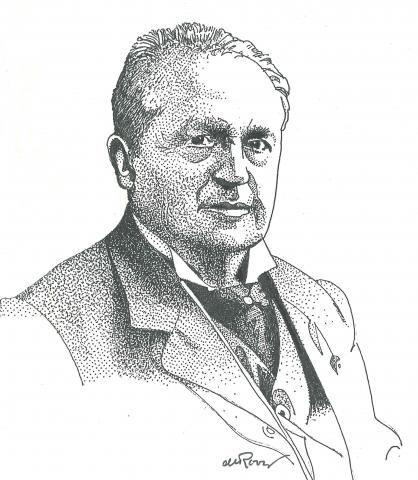A revised and updated version of
Abraham Kuyper: An Annotated Bibliography 1857-2010 by Tjitze Kuipers (2011)
You can buy a printed edition of this book on the site of the publisher.
2005
A scholarly edition of Kuyper’s previously unpublished submission for the essay competition held by the theological faculty of the University of Groningen in 1859 (cf. RKB 1). The faculty invited students to write a treatise comparing the ecclesiologies of Calvin and A. Lasco while making reference to the way in which their ideas were influenced by their personal lives. January 8, 1860, marked the third centennial of A. Lasco’s death.
The treatise is divided into three main parts. The first part contains a structural comparison of Calvin and A. Lasco’s ideas about the church. The second part explains how their different ideas arose as a consequence of their respective personal histories and also shows how these ideas correspond with the rest of their doctrines. In the third section Kuyper assesses Calvin’s and A. Lasco’s ecclesiologies according to the norm of the gospel.
Kuyper sent his Commentatio to Groningen on April 4, 1860. He submitted the essay under a passphrase borrowed from the Imitation of Christ by Thomas à Kempis: “Let not Moses speak unto me [or one of the prophets], but rather thou, Lord.” On June 15, 1860, the treatise was awarded the top prize, the gold medal, which Kuyper received on October 11—Groningen University’s Founder’s Day. To prevent examiners from recognizing those who submitted essays, essays not only had to be handed in under a passphrase, but also could not be written in the submitter’s hand. Kuyper’s transcriber was not acquainted with Latin, however, and made many mistakes while copying the original, which has since disappeared. At least four other hands, including Kuyper’s own, can be detected in the transcriber’s copy.
This edition is divided into two volumes—an introductory volume and a critical edition of the treatise itself. The first volume contains both a historical (pp. [7]–66) and a philological (pp. [67]–104) introduction, followed by sixteen illustrations (pp. 105–120), an index of the annotations (pp. 121–165)—to which the text in the second volume constantly refers with asterisks—a bibliography (pp. 167–194), three indices, and a table of contents for the Commentatio. All the essays in the book are written in English. The second volume contains the edited Latin text with footnotes (398 pp.) of the Commentatio in quaestionem ab Ordine Theologorum positam in Certamen Litterarium [Treatise on the question of the theological faculty composed for an essay contest]. Kuyper also added five excursuses to the Commentatio. The editors of this volume checked over the citations, correcting and improving them as necessary.
The Commentatio is considered the key text in Kuyper’s oeuvre. In this work, the twenty-two-year-old Kuyper exhibited the roots of his ideas about the church as a free community of Christians which manifests itself as a living organism in all spheres of life. An edited version of the first part of the Commentatio formed the content of his Leiden dissertation (see 1862.01).
Brill’s critical edition of the Commentatio was published in the month of the Vrije Universiteit’s 125th anniversary.

